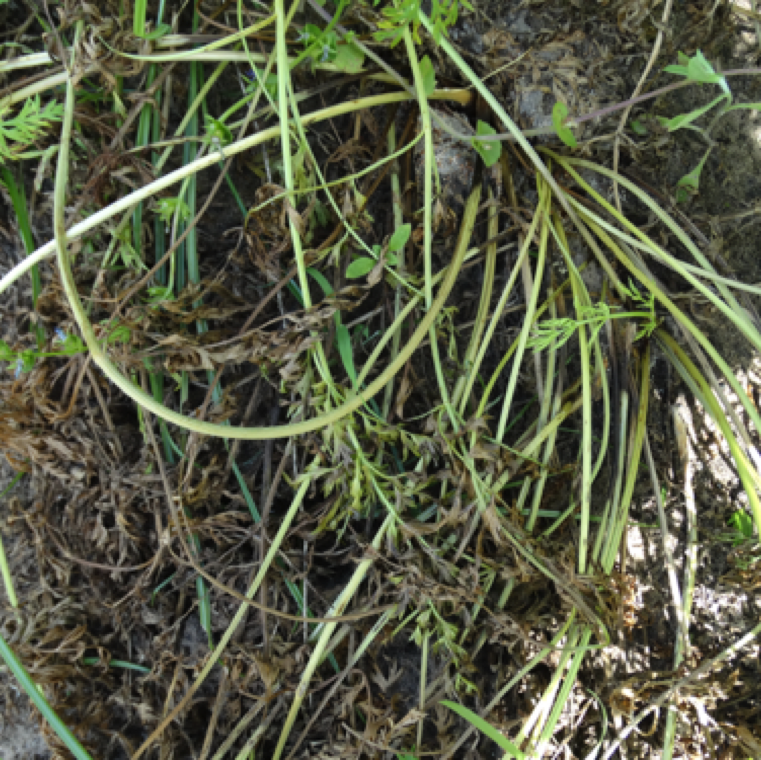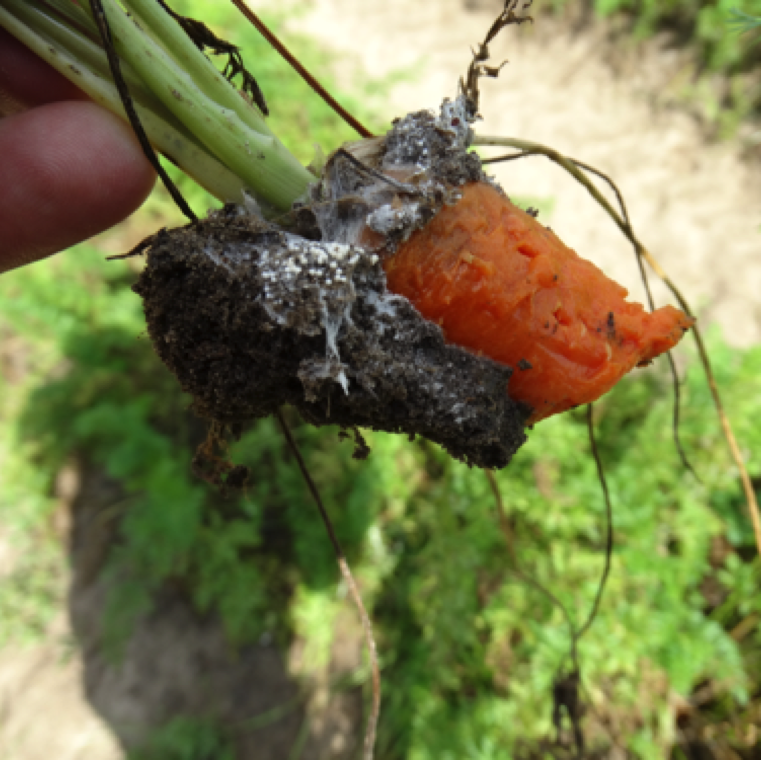

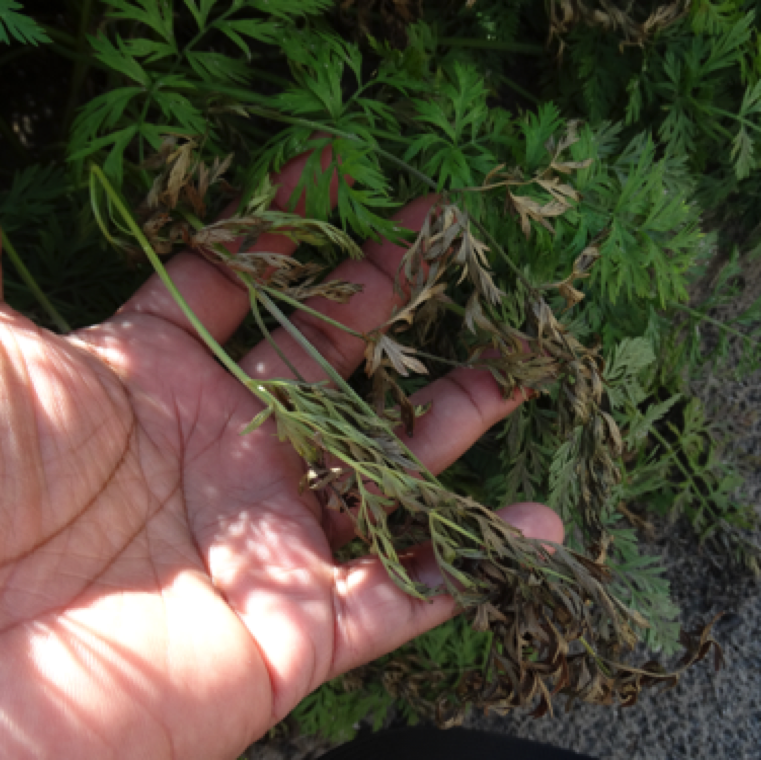
Southern blight is a minor issue on carrots in Florida, and the disease tends to be spotty in nature in fields with the disease. In rare cases the disease can cause major yield losses.
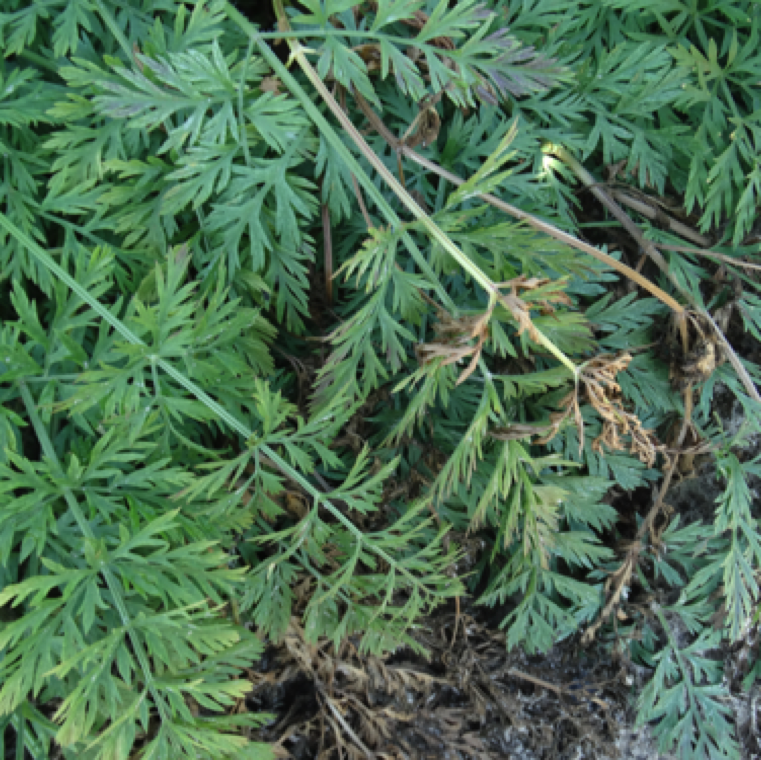
The first symptom of southern blight on carrot is yellowing and wilting of the leaves. This symptom can be very similar to early symptom of cottony rot/pink rot.
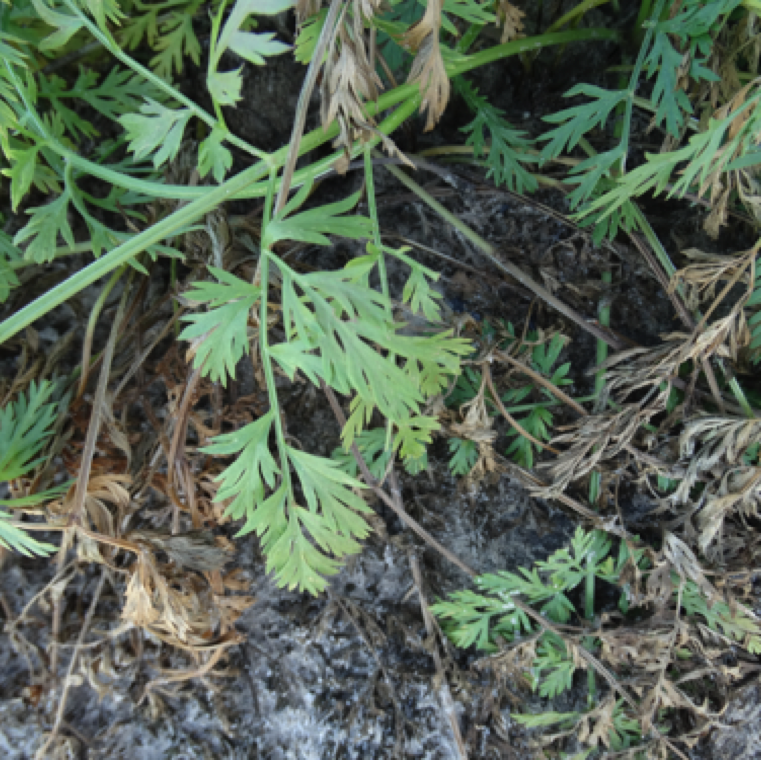
The leaves of affected plants show rapid progression of wilting and desiccation that opens up the canopy. The entire plant may show yellowing symptoms.
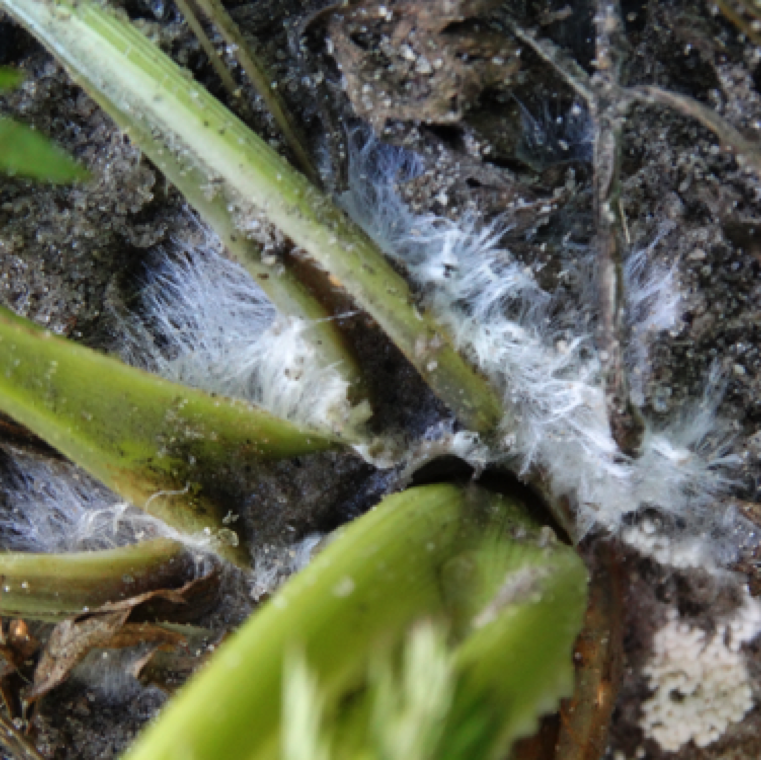
The definitive symptom on the plant is the white mycelium (fungal strands) at the base for the plant. The petiole will show unusual darkening. Also white colored mustard sized sclerotia can be noted.
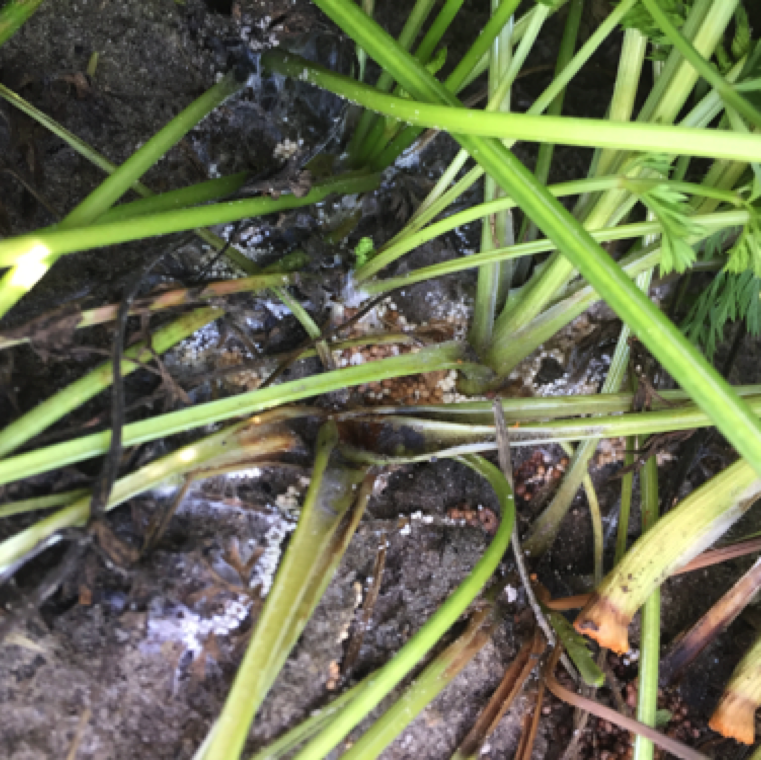
When sclerotia matures, it changes color from white to cream, and light and dark brown. The sclerotia can survive is soil for many years reinfecting carrots and also many other crops.
SOUTHERN BLIGHT
Fungal causal agent: Sclerotium rolfsii
Carrot diseases
